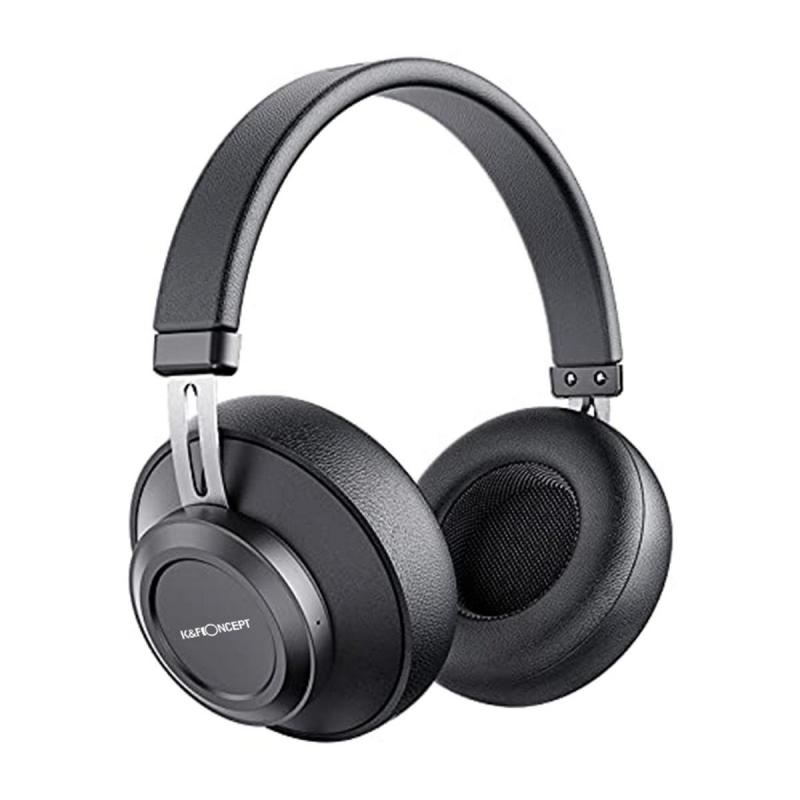How To Switch Bluetooth Headphones Between Devices?
Switching Bluetooth Headphones Between Devices: A Comprehensive Guide
In today's fast-paced digital world, Bluetooth headphones have become an essential accessory for many. They offer the convenience of wireless connectivity, allowing users to enjoy music, podcasts, and calls without the hassle of tangled wires. However, one common challenge that users face is switching their Bluetooth headphones between multiple devices. Whether you're moving from your laptop to your smartphone or from your tablet to your gaming console, the process can sometimes be confusing. This article aims to provide a detailed, step-by-step guide on how to seamlessly switch your Bluetooth headphones between different devices.
Understanding Bluetooth Pairing and Connectivity

Before diving into the steps, it's essential to understand the basics of Bluetooth pairing and connectivity. When you pair your Bluetooth headphones with a device, a secure connection is established, allowing the two devices to communicate. This connection is typically maintained until you manually disconnect or pair the headphones with another device.
Most modern Bluetooth headphones support multi-point connectivity, which allows them to connect to multiple devices simultaneously. However, the exact number of devices and the ease of switching can vary depending on the brand and model of your headphones.
Step-by-Step Guide to Switching Bluetooth Headphones Between Devices
1. Disconnect from the Current Device
The first step in switching your Bluetooth headphones to a new device is to disconnect them from the current device. Here's how you can do it:
- On a Smartphone or Tablet:
- Go to the Bluetooth settings.
- Find your headphones in the list of paired devices.
- Tap on the headphones and select "Disconnect" or "Forget This Device."
- On a Laptop or Desktop:
- Open the Bluetooth settings.
- Locate your headphones in the list of connected devices.
- Click on the headphones and choose "Disconnect" or "Remove Device."
2. Enable Pairing Mode on Your Headphones
Once your headphones are disconnected from the current device, you need to enable pairing mode to connect them to a new device. The method to enter pairing mode can vary depending on the brand and model of your headphones. Generally, you can follow these steps:
- Turn off your headphones.
- Press and hold the power button for a few seconds until you see a flashing light or hear a voice prompt indicating that the headphones are in pairing mode.
Refer to your headphones' user manual for specific instructions if you're unsure how to enable pairing mode.
3. Connect to the New Device
Now that your headphones are in pairing mode, you can connect them to the new device. Follow these steps:
- On a Smartphone or Tablet:
- Open the Bluetooth settings.
- Ensure Bluetooth is turned on.
- Look for your headphones in the list of available devices.
- Tap on the headphones to pair and connect.
- On a Laptop or Desktop:
- Open the Bluetooth settings.
- Make sure Bluetooth is enabled.
- Search for new devices.
- Select your headphones from the list and click "Pair" or "Connect."
4. Verify the Connection
After pairing your headphones with the new device, it's essential to verify that the connection is successful. You can do this by playing some audio or making a test call. If you hear the sound through your headphones, the connection is successful.
Tips for Seamless Switching
Switching Bluetooth headphones between devices can be straightforward if you follow the steps outlined above. However, here are some additional tips to make the process even smoother:
1. Use Multi-Point Connectivity
If your headphones support multi-point connectivity, take advantage of this feature. Multi-point connectivity allows your headphones to connect to multiple devices simultaneously, making it easier to switch between them without manually disconnecting and reconnecting.
2. Keep Devices Close
Ensure that the devices you want to switch between are within the Bluetooth range of your headphones. This range is typically around 30 feet (10 meters), but it can vary depending on the environment and the specific devices.
3. Update Firmware
Manufacturers often release firmware updates to improve the performance and compatibility of Bluetooth headphones. Check for firmware updates regularly and install them to ensure your headphones work seamlessly with all your devices.
4. Reset Your Headphones
If you encounter any issues while switching between devices, try resetting your headphones. This can resolve connectivity problems and restore the headphones to their default settings. Refer to your user manual for instructions on how to reset your specific model.
Troubleshooting Common Issues
Despite following the steps and tips mentioned above, you may still encounter some common issues while switching Bluetooth headphones between devices. Here are some troubleshooting tips:
1. Headphones Not Showing Up in Bluetooth List
If your headphones do not appear in the list of available devices, ensure they are in pairing mode. If they are, try turning Bluetooth off and on again on the device you're trying to connect to. Restarting both the headphones and the device can also help.
2. Connection Drops Frequently
Frequent disconnections can be frustrating. Ensure that there are no physical obstructions or interference between your headphones and the connected device. Additionally, check for firmware updates for both your headphones and the device.
3. Audio Quality Issues
If you experience poor audio quality after switching devices, try disconnecting and reconnecting the headphones. Ensure that the device's Bluetooth drivers are up to date. Sometimes, adjusting the audio settings on the device can also improve sound quality.
Switching Bluetooth headphones between devices doesn't have to be a daunting task. By understanding the basics of Bluetooth connectivity and following the step-by-step guide provided in this article, you can seamlessly switch your headphones between multiple devices. Remember to take advantage of features like multi-point connectivity and keep your devices updated to ensure a smooth and hassle-free experience. With these tips and troubleshooting steps, you'll be able to enjoy your wireless audio experience across all your devices effortlessly.
